
Károly Kincses
A little bit of Europe in the Káli-basin The Pajta Gallery’s 25 years
Where and what?

Salföld is 165 kilometres from Budapest, but we need to travel a little bit further than that to begin our story. We are in the final years of communism. In those times, those who went to university, me included, learnt in the sociopolitical seminars that culture is not a commodity. Some time later – when communism alone used this expression, in superior opposition to capitalist ideology – we altered it to culture is not a commodity, but it costs money. Nowadays no one would even dream of expecting the fruits of culture to be free. This is how far we’ve come.
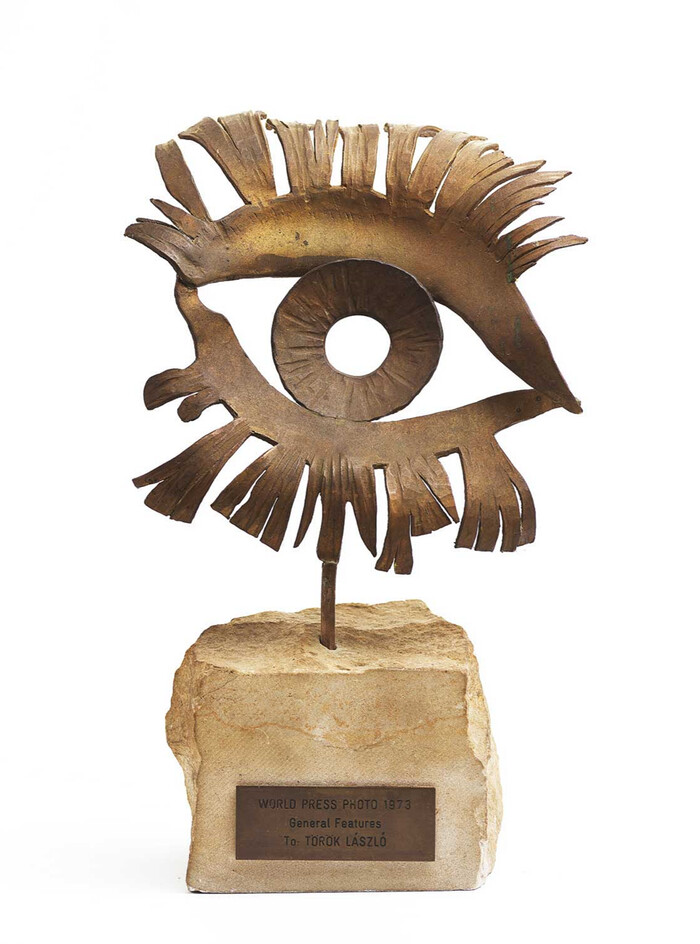
Though the crux of the matter isn’t the phrase itself, but its consequences. If culture is not a commodity, then neither are the products of culture; for example books bought at a token price, one or two books costing only 3 forints in the ‘cheap library’, a novel costing hardly 65 forints more, and the thickest glossy pictorial album as little as 200 forints. Whether this was a good thing or not, decide for yourselves; what I’m going a long way round to say is that when they weren’t a commodity, the means of obtaining them didn’t follow the rules of the free-market economy. However, in better countries, those who wanted to obtain, let’s say, an original artistic photograph went to the gallery and bought it, or trawled through the relevant antique markets, put a bid in at an auction, or perhaps even contacted an agent... This seemingly innocent phrase, that culture is not a commodity, also covered the situation that the necessary infrastructure was not yet in place to enable a photograph to be conceived, made, exhibited, purchased and later even re-sold, all without the need for special permissions.
Under these circumstances, and indeed unprecedentedly, in 1983 the Gallery of Photographic Art opened on Vaci Utca, in those days the most elegant and sophisticated street in Budapest, in what had previously been a ‘Főfóto’ studio. There were few things in which communist Hungary was the leader, or if not the leader at least on a par with other less autocratically controlled parts of Europe; one of those things, though was the Gallery of Photographic Art. Here, the two directors managed somehow to make the work of contemporary Hungarian photographers available for sale. At that time – as we now know – communist culture and its spokesmen were still arguing about whether or not culture is a commodity. To this question, the Gallery of Photographic Art gave a specific reply. Under Mihály Gera’s direction the gallery was able to acquire from more than 60 significant contemporary Hungarian photographers 200 negatives, enlarging them to make between 25–100 contact sheets of the same size and quality, which they wrote contracts for, made records of, and put on sale, and from which they also organised exhibitions, printed calendars and postcards. In the beginning, mainly foreign tourists bought the usually more cheaply priced photographs, but gradually a local customer base developed, particularly when in 1984 Andre Kertész dedicated one of his books to the gallery, while visiting his native land. In 1989 with no forewarning, the gallery’s administrators suddenly decided to cancel the contract and sell the two-storey gallery space to a multinational company; this during a series of events to celebrate 150 years since the invention of photography. This decision came as a great shock to most of those whose lives were part of the Hungarian photographic scene. There were those who reacted angrily, banging the table, swearing, screaming, gesticulating hopelessly.... the usual things. Two years passed.
Then, unexpectedly, László Török stepped into the breach. In his gallery at his house in Salföld, together with George Galantai – who had just returned from West Berlin – he opened an exhibition entitled The Wall. Denver-2. But let’s not get ahead of ourselves! The story began in 1984, when László Török and his wife bought an old house on the edge of the village and had it renovated, to use in the years ahead as a holiday home – though for the past three years they have spent most of their time there. The restaurant, meeting place and gallery is just a few yards from the Sea of Stones. The garden is enchanting, the interior resembles a Buda coffee house and an urban gallery blended together in an old, cottagey atmosphere. The place has a soul; we might call it the genius loci.
The First one

Let’s go back to the exhibition. At 6 o’clock on 21June 1991 the exhibition was opened. It included material from the Eastern European themed exhibition held in Denver, Colorado, in the spring of 1989, which included work by several Hungarian photographers: András Balla, Ernő Fejér, István Halas, Gábor Kerekes, János Szerencsés, Lenke Szilágyi, István Szirányi, Péter Tímár, Gyorgy Tóth, László Török, Attila Vécsy, János Vető. Gyorgy Galantai added to it examples of his own work from West Berlin, a series in colour entitled ‘The silent sphere’ and to link with this, Galantai’s son Zsolt, a musician, played the Eric Satie piece ‘Where silence has lease’. It was the first time these works had been exhibited since Berlin.

Sections from the opening speech: ‘I found there were many good reasons why I should take on the task of opening this new gallery. The first was freedom: freedom to freely establish a gallery anywhere in the country. To try out our ideas independently. There is no longer a central jury, a cultural policy. So the artist can choose the gallery and the gallery the artists freely. I think it probable that it will be the galleries – or more than likely those artists whose work is easier to sell – who will do the choosing; though in the long run it won’t be they who are the richer for it, but rather those who dared to take risks. It is almost two years now since I returned from West Berlin, where I had a DAAD scholarship, though here at home no-one was interested in what I was doing there. László Török and his new gallery were the first to ask me to show my Berlin work. That is why I am here. Clearly the photographs will determine the character of the gallery, since an exhibited photographer is a “photograph taker”, which has approximately the same ambiguous meaning as if I described myself as a “fine artist”: This is to say that the old expressions have been thrown out and we are heading towards a new universal culture. As proof of this, here is the material from the Denver exhibition, which I now declare open...’ (http://www.galantai.hu/works/exhibition/91_PG_hu.html)

With this, the Pajta Gallery was opened. Printed on the invitation cards were the words, ‘The compositions can be purchased on the premises’, which indicated the gallery’s intentions. Looking back at the photographs created in those days, and remembering the first hours spent there, the gallery was more reminiscent of the original barn than the coffee house, family restaurant, and exhibition space of today. I am very fond of one of Török’s sayings, which I have heard and read about in several different guises since.
This is what he said to a journalist: ‘It is a thatched house, where we created a gallery in the barn. I don’t keep straw or crops in there, but my contemporaries’ photographs.” (Zoltán Zétényi: The poet of light, FotóVideo June 2008).
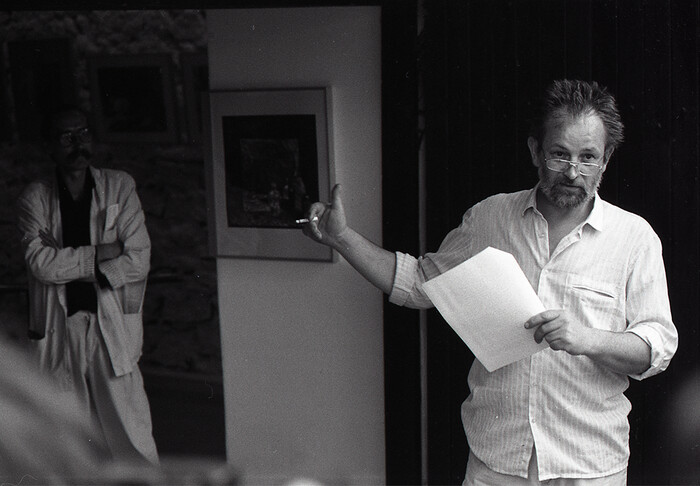
No-one, not even Török himself, would have thought that 25 years later we would be talking about this event as a piece of history. On the subject of the newly purchased thatched house, the journalist Zoltán Hegyi asked why there was a gallery but no cottage garden to be seen, to which Török replied: ‘I started to bring the house into some kind of order; we were happy with it, we liked it very much, but the regime change, which had not left the lives of those in artistic society untouched either, impelled me to concern myself not only with managing my own career, but also with others of my generation and with the youngsters who were just starting out. In any case, we were lacking an establishment, particularly as the Vaci Street gallery had closed down, and we needed a new place.’ (Zoltán Hegyi: To teach the impossible - Demokrata, issue 38, 1996).
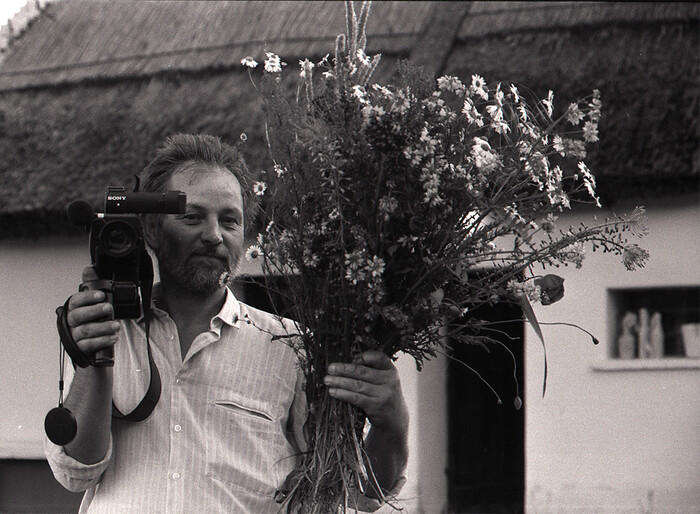
The gallery quickly became operative. Exhibitions were held in it from spring until late autumn, and those belonging to László Török’s intellectual circle, for the main part artists from the Hungarian Photographic Society’s First Creative Group, offered pictures for sale in a permanent exhibition. From the outset he ran the gallery with an open mind, but also with a sharp eye on quality, which in those times wasn’t the general practice.
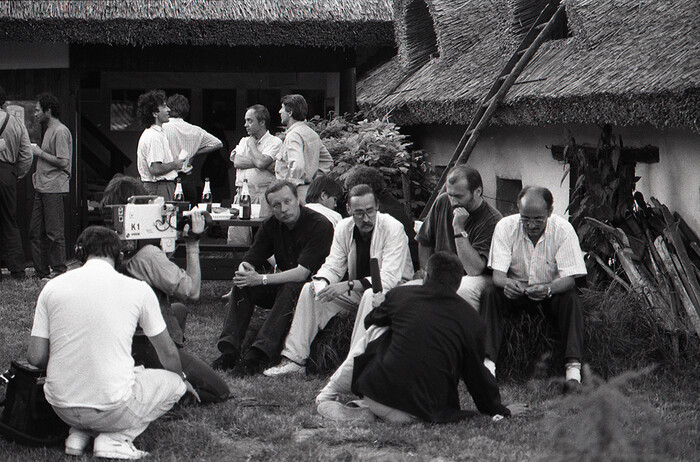
I am talking as if it were happening today... but these words of the grouchy author should be put in parenthesis. Yet another journalist friend also had something to say when he went there. ‘As a viewer unaccustomed to frequenting art galleries where the exhibits are for sale, I was surprised, as it seemed that the prices of the framed photographs were rather calculated with the wallet of the foreign tourist in mind. Though a Hungarian visiting the Pajta Gallery doesn’t have to come away empty-handed, as there are several beautiful catalogues, publications and, last but not least, a variety of very special souvenir postcards. There are no posters, no publicity at the moment to advertise the gallery, which is open to the end of the summer; just a modest arrow to help visitors who already know of its existence. But I recommend others, those with holiday homes in the Balaton uplands, to give it their attention on a rainy day.’ (Foldes - Exhibition, Salföld, Pajta Gallery).
The Gallery has always worked in this way. In himself, Török combined his status as a professional European, or indeed international, photographer with his position as a local property-owner to fit ever better into the village environment. An extremely idiosyncratic micro-culture developed in the tiny village; less than a dozen permanent residents and many more temporary residents and visitors presented the Töröks with two tasks. On the one hand they had to fit into the communal life of the village; on the other, the Pajta Gallery needed to provide a haven where, as well as the locals, the hordes of photographers, artists, architects and intellectuals from the surrounding area could gather; they all expected to find an atmosphere of culture. In this challenging situation, my feeling is that the Töröks – and I emphasise, all members of the family – have found a balance, particularly as they have at last settled there permanently and have taken over the running of the kitchen, restaurant, coffee house, bar, which for years had been rented out. As well as being a place to meet over food and drink, just at the edge of the village, it has a wonderful, expertly restored collection of buildings, where everyone who comes to Salföld stops and stares, whether they are connoisseurs of art, hikers, or people just visiting their friends.
Nudes in the village
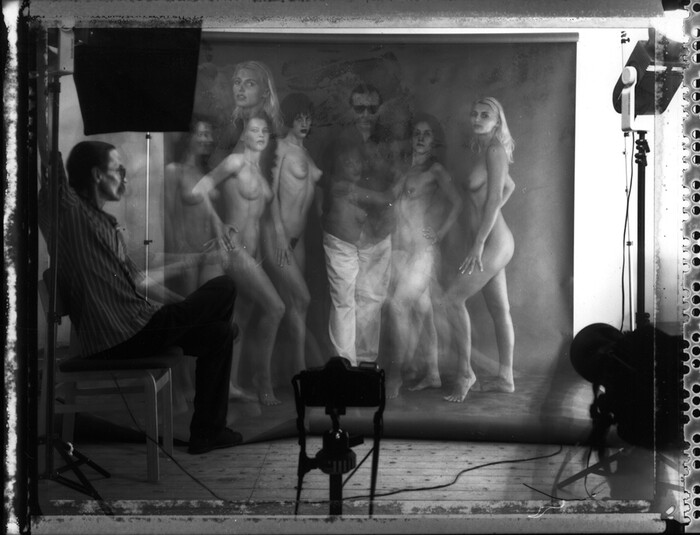
Three years after the opening, in 1994 an Artistic Nude photographic course was founded. In the first year Magdi Kocsis, whose idea it was, arranged the course, organised the models; from the second year on, though, it was mainly amateur German photographers who came, having heard via Lajos Keresztes that in one of the most beautiful places in the Káli Basin an artists’ settlement had been founded with professional photographers who also taught, select models, make-up artists and accommodation. It gathered momentum and photographers arrived from Belgium, Switzerland and other Western European countries; even a few Hungarians were willing to pay the steep entrance fee. Proof that the initiative had been a success was the fact that in the following years successive waves of photographers came to the village. ‘Győző Somogyi – painter and graphic artist, with his horses, goats, sheep – is something of a local celebrity in the little village of Salföld. As have become László Török and the Nürnberg-based Lajos Keresztes, through the inauguration of their international photographic summer academy. The courses’ resident guest professional photographers created a particular atmosphere with their exhibitions, lectures, discussions, which had already aroused the interest of the international media. Here, everyone paid for the course themselves. Throughout the entire summer the rhythm of the weekly courses was significantly enhanced by the involvement of the most eminent artistic photographers in Hungary. Anyone with some idea of the Western photographic world, with its tremendous focus on technology, automation and mass production, can readily appreciate the high aesthetic level of the traditional ways of working offered by these courses. Every year as well as professionals from America, Germany, Belgium, Austria, Holland, Switzerland or Scandinavia, one or two talented Hungarian artistic photographers were always introduced as guests, and were given this opportunity to develop their careers at no cost. Throughout the summer the material on display for visitors to the gallery changed constantly. It really is quite easy to find your way to Salföld and the Balaton uplands. Look for the quieter, hidden, winding lanes of the north coast.’ (A:I): We caught a Turk. The Hungarian artistic photographers’ school. Világlap, April 1996).

Although the Pajta Gallery is not just for the elite, it became an institution for a particular segment of artistic photography (we could say of the segment that it covers experimental, subjective work), and, in my judgement, the fact that it was never nationalised played a large part in achieving this; it never had a safe, calculable budget, but survived this quarter-century on its own income and grants and sponsorship from various sources. Anyone who has tried to run an institution like this can readily understand what a challenge it is; it’s enough to give you grey hairs and worry lines. Once they had financial support, they would open a new exhibition. If not, then the walls were hung with photographs that had been given to the gallery as gifts or for sale on commission. What is for sure, during the 25 years there never was a moment when the gallery walls were bare. As was customary, the place was opened at the end of spring and closed in the middle of autumn; exhibitions took place only then. But the walls of the gallery were always full of work by well-known Hungarian photographers, to be admired by visitors – local inhabitants in for a glass of wine, weary cyclists, or photographers coming specifically to view the pictures.
There has always been a core of between 20 and 25 people who feel bound, in differing ways, to Salfold, the Pajta and the Töröks, which in essence are all one and the same thing. Also approximately double that amount of photographers who have taken part in one of the groups or workshops in some way. László Török is the medium through whom the two sections meet. Here the two opposite worlds come together, where neither politics, religion nor what golf club they belong to are their points of reference. The Pajta Gallery is a meeting place where an unusual variety of people, artists, visitors or travellers just passing through, gather; where for a short spell they can sit down, eat, drink, talk and then disperse, going off in all different directions. It is a very delicate balance, not easily sustained. Though it has been successfully achieved over the past 25 years, and maybe it will go on like this... Suffice it to say that the Pajta is one of the most important places in the history of Hungarian progressive photography, with more than a hundred photographs having been displayed on the centuries-old walls, created by a serious group of over sixty artistic photographers.
Other exhibitions:
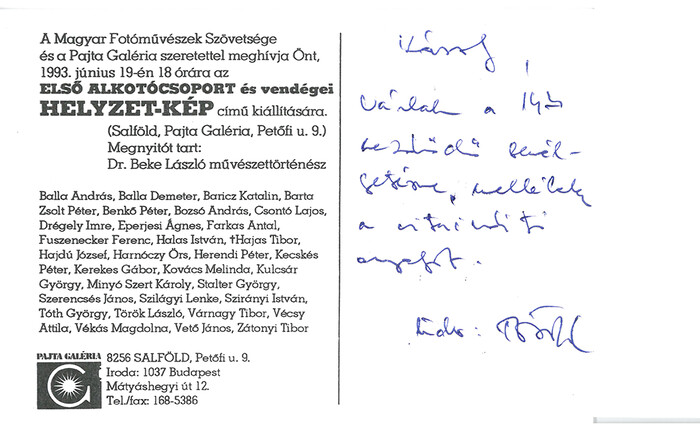
The new exhibition in 1993 bore the title Helyzetkép (The state of affairs) and was opened by László Beke on 19 June at 6 pm. The best of Hungary’s contemporary photographers were represented, András Balla, Demeter Balla, Kati Baricz, Zsolt Péter Barta, Péter Benkő András Bozsó, Lajos Csontó, Imre Drégely, Ágnes Eperjesi, Antal Farkas Ferenc Fuszenecker, Tibor Hajas, József Hajdú, István Halas, Őrs Harnóczy, Péter Herendi, Péter Kecskés, Gábor Kerekes, Melinda Kovacs, Gyorgy Kulscar, Károly Minyó Szert, György Stalter, János Szerencsés, Lenke Szilágyi, István Szirányi, György Tóth, László Török, Tibor Várnagy, Attila Vécsy, Magdolna Vékás, János Vető, Tibor Zátonyi. Prior to the opening, Török organised a discussion group, sending the discussion material out to us in advance. Looking back now, a few of those present are no longer alive, a few are not on speaking terms with each other, and the remaining elements of the group try somehow to nurture, create and exhibit as a photographic society almost starved into submission. Maybe at the time we didn’t even realise what an important thing it was that László Török had established here.

Találkozások (Encounters) – took place in 1994. Török’s friend Jenô Balaskó (whohas since died), opened it.
Tanítványok (Students) – in 1998 Török organised an exhibition in the Pajta Gallery comprised of work from the German and Dutch students who had taken part in the photographic courses held earlier on, and which were considered worthy to be shown
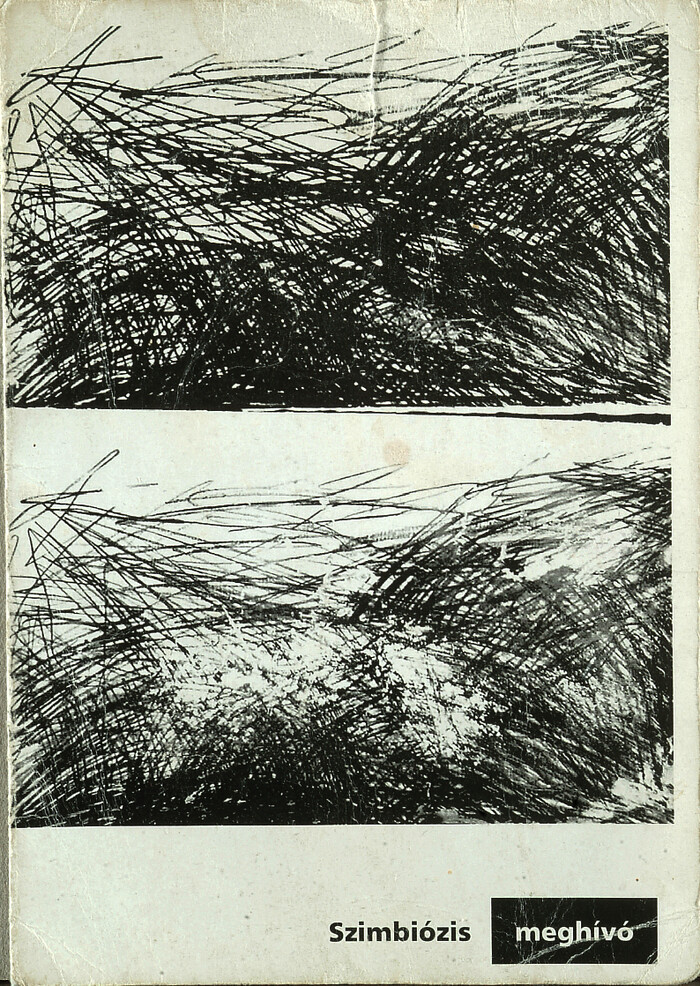
Szimbiózis 1-2. (Symbiosis 1-2) - Some of the work of Miklós Erdély appeared in the exhibition of 2004, and also featured on the invitation card as his motto had been the inspiration for the exhibition’s concept: ‘It is not possible to establish what art is, it is only possible to make a decision.’ And he continued: ‘To my mind a really creative person is one who agrees that different art forms should have nothing in common with one another.’ (Miklós Erdély: Marly theses). The illustrious line-up presents contributions from Sándor Apáti-Tóth to Tibor Zátonyi.
A flotilla of forty eight artists clamour for space in the hall, in fact non other than the Pajta Gallery, with Captain Török at the helm, I say this as I was invited to open the exhibition.
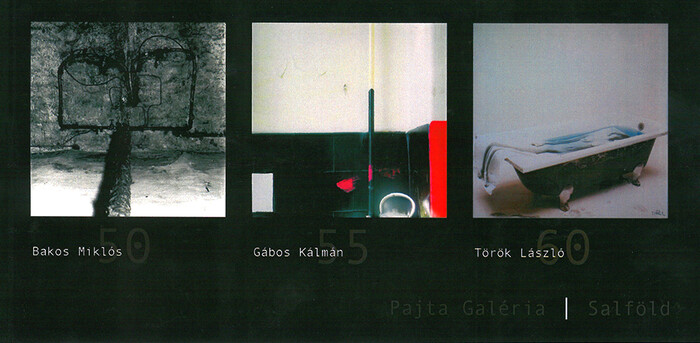
In May 2008 an exhibition entitled 50-55-60 (Miklós Bakos, Kálmán Gábos, László Török) was advertised, which if I remember rightly, I opened.
Allow me to quote a few of the words from my speech, as amongst the countless vernissages I have attended, none has remained imprinted on my mind as well as this one; true, this may be because of the tragic circumstances which were to follow.
‘When I accepted László Török’s invitation to open this exhibition, it prompted me to ask: what does 50-55-60 mean to me, to us? We didn’t come here to wallow in nostalgia – I would have hated that – but to observe what Miklós Bakos, Kálmán Gábos and László Török are up to these days. Have they found a way of communicating to an audience what it is to be fifty, and fifty-five, and sixty, or not? If the answer is yes, then it’s a good thing that the Pajta Gallery is hosting the exhibition. Then every one of us, who have paid attention to their work over the past decades, will see a new stage of development from the three, whose work has sometimes been in parallel with each other and has sometimes gone off at totally different tangents.
If the answer is no, if only the well-known old pictures hang on the walls in rows, a re-hash of the old styles occupying the space (which for a photographer, we might say, would be like firing blanks), from a certain point of view, surveying it could still be useful and instructive, because it is never too late to change. If these new works really are a new phase and not just a re-make, then, and only then, I will offer my services free of charge next year to open an exhibition entitled 51-56-61!
It was my belief, when I wrote that in in the Pajta Gallery in 2008, that the last sentence was a good joke. What none of us could have known at the time was that less than two years later the four of us would meet again in the Farkasréti cemetery, though only three of us went under our own steam, taking the fourth, Kálmán Gábos with us
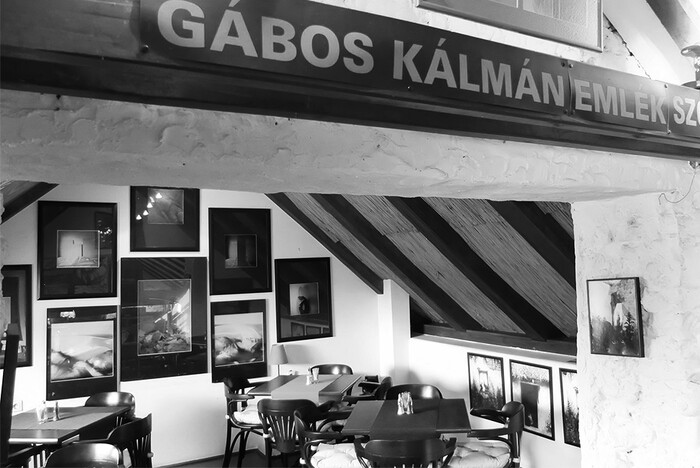
László Török lost not only a contemporary, colleague, but also a friend, when Kálmán passed away. In order to try to come to terms with it, he created a new studio in the old hay-loft, where he opened the Kálmán Gábos memorial exhibition in 2012. Again, it fell to me to consider, write down and narrate my thoughts regarding Gábos, in such a difficult situation to accept: the loss of someone who died before his time. Amongst other things, this is what I said: ‘When I heard the news of the death of Kálmán Gábos, I thought about the fact that everyone without exception is responsible for their own life: from our birth to our death, it is an extraordinarily short space of time, to do with as we please, or as we can. Gábos, in an exceptionally wasteful way, resented his life, his days, his weeks, his months, his years, and any kind of comment, advice or help he received as a result of this, he would reject, if not immediately, then soon after. Because he was obstinate and over-sensitive.
Just like everyone else who tried, I couldn’t persuade him to be satisfied with his life either. But at least I can say I did try... Since then I have learnt that besides being responsible for one’s own life, we also have a duty to others too. If we are lucky, then we manage this to good effect, if not, then we find ourselves in the situation we are in today. A solution is forced upon us.
At least – in the case of an extremely talented person – in absence of the person himself, we can try to keep his memory alive with a relatively modest amount from his life’s work. His work in the place of the man. It isn’t a fair exchange, but one which is now too late to regret... today is his 61st birthday. Though we buried him in 2010, Gábos are you there? If I believed in the afterlife, Kálmán would now be roaring with laughter, a rare thing indeed. There is some kind of permanence in being so far away. Though it is true, things change and we get used to it. And what is left is no longer his concern; this is now our responsibility, his family, his friends and colleagues. We have no choice but to do our duty.
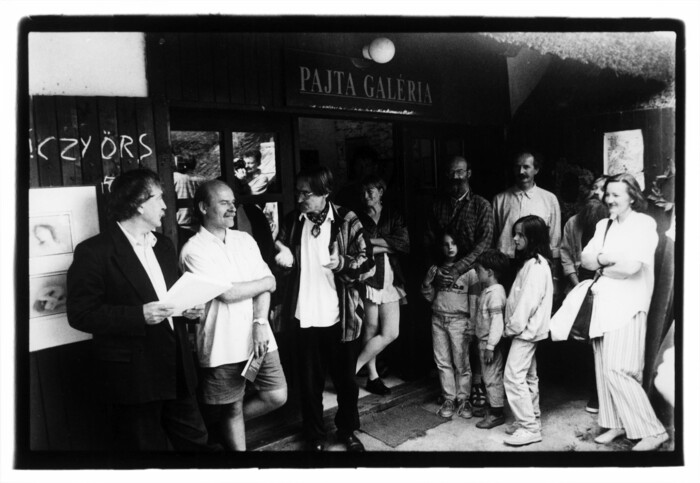
Thanks to Török, in 1997, Örs Harnóczy, from Pécs, who built himself a house in Salföld, surprised visitors to the Pajta Gallery, and himself, with an exhibition entitled Az öt X (The five Xs). He put it together with another photographer from Pécs, László Körtvélyesi. At the same time Török put on display a fresh collection of his own earlier work. ‘Every year we organise new exhibitions, though we have also held symposiums, discussion evenings which were attended by many noteworthy Hungarian contemporary photographers.’ Török once said to a journalist. It’s true, I witnessed it.
I wrote these words as we gathered in the Salföld village hall for the silver jubilee exhibition entitled Kópiák (Duplicates), arranged by Török and Peter Herendi, and opened by László Haris on the 3 rd of June 2016. Not only the pictures from the catalogue can be viewed, though they can be quite surprising under closer scrutiny. Next to the Pajta photographic art group exhibition, in the smaller room, the portraits and landscapes of László Mészáros are on display. How did the work of this photographer, who moved to Salföld three years ago, come to be exhibited alongside the others, everyone I asked had something to say about this, though the replies had nothing remotely in common. I think, that Török, either purposefully, or intuitively, wanted the big names of the profession who had assembled in Salföld, to become better acquainted with Mészáros. If that was the case, it was a clever move. In tandem with the village hall exhibition, in the Pajta Gallery too there are freshly exhibited work of the photographers who have passed away, Tengölics, Szerencsés, Gábos, Jama, Kerekes, in a prominent position. While the camera exhibition of András Balla can be seen grouped together in the entrance of the Pajta. Suffice to say, due to the Pajta, both Salföld and Hungarian photography are celebrating.
Besides photography, the place has also hosted exhibitions of local artists, and architects, although they don’t feature regularly in the gallery’s professional photography schedule, as I wrote earlier on, it is important to mention them. On display have been the works of Győző Somogyi, painter; László Petrovics, architect; Béla Raffay, sculptor; and the textiles of Ildikó Ardai; and if there was a need, village exhibitions have also been held here. As was last year’s big attraction.
‘An art auction for charity is to be held in the Pajta Gallery, Salföld on 8 August; on offer are works by artists from the Káli-basin. The aim of the auction is to promote the work of artists who are permanently resident, or who have holiday homes in the Káli-basin. Amongst these are artists of note such as László Török, photographer; Győző Somogyi, painter; Dávid Raffay, sculptor; György Szomjas; film director. Also to be auctioned are works by Charles Whitehouse, printer; István Kovács, writer, poet, translator; Dalma Korényi, sculptress; Miklós Szent-Györgyi and Gábor Gerlóczy, painters; Ágnes Szabó and Margarete G. von Georgi, graphic artists; Gábor Boka leather-worker and theatre director; the printed silks of Rita Rácz; the original film posters of Gyorgy Szomjas (Rosszemberek – Badmen) and Ferenc András (Vadon – Wilderness); Gusztáv Fábián, mayor of Salföld and the creator of much of the decorative plaster work to be seen on the facades of the area’s renovated houses.’ (Art auction at the Pajta Gallery, Salföld, 24.07.2015)
Postscript

In many ways the gallery meant a considerable change for Hungarian photography. I can say of the Pajta Gallery and the stream of work it has produced that I have observed it from the outset. I was there at the opening, and at every important event since then, sometimes as a viewer, and on other occasions taking part in some way, lending my support where I could, because I was convinced that a private gallery such as this would play an important role and satisfactorily fill the gap in Hungarian photography’s infrastructure. László Török recognised, that for him, his contemporaries and the generation coming after us, there was too little guaranteed space, time or potential in Hungary’s small playing field; so he established, to his own taste and largely from his own pocket, the Pajta Gallery 25 years ago. Not only did he bring it into being; he has kept it running ever since. If I were to offer a criticism, it would be that only the progressive, avant-garde, experimental work of middle-aged photographers is on display, giving visitors, domestic and foreign, the press, and anyone interested, the opportunity to view only this particularly selective selection from the past half-century in the history of Hungarian photography. It’s as if we are looking at a menu of photography as excellent as the restaurant’s menu, from which the chilled cucumber soup and the grilled mangalica pork chop are exceedingly tasty, not to mention the rack of lamb at Easter.

Most important of all is that the Pajta Gallery has become a place. A place free of any national jury with its ideology of how work should be evaluated; where the aim has been to show photographic works that were experimental in a totally new way, and which were not often seen in such a concentrated fashion, with the aim of putting them on the market. The collection of photographs displayed there has both reflected and been reflective of the gallery’s sensitivities, and those of the artists it adopted. Adding to the enchantment of the place is the lovingly renovated house and adjoining barn, a space in which the artists and others it had attracted can eat and drink together. Over time the Pajta Gallery has developed something of a cult following, amongst all the other places to see in Salföld, partly altering the lives of the 50 residents, whose number has gone up to 52, now the Töröks have retired to live there permanently. With the Pajta Gallery, with the First Creative Group, with exhibitions, books, films, summer workshops, Török has become an important figure in Hungarian photography. Now he spends most of his time sitting in the porch, against the glass wall of the gallery, soaking up the sun, smoking, chatting and raising his glass. Differing from Kálmán Mikszáth in body weight alone. He has found his place, one that I envy.
